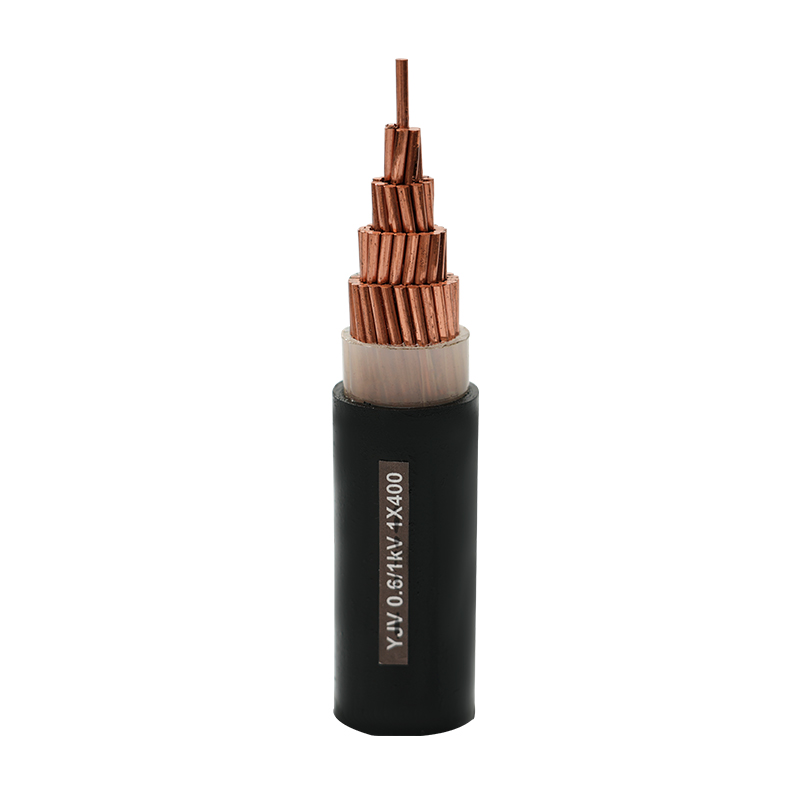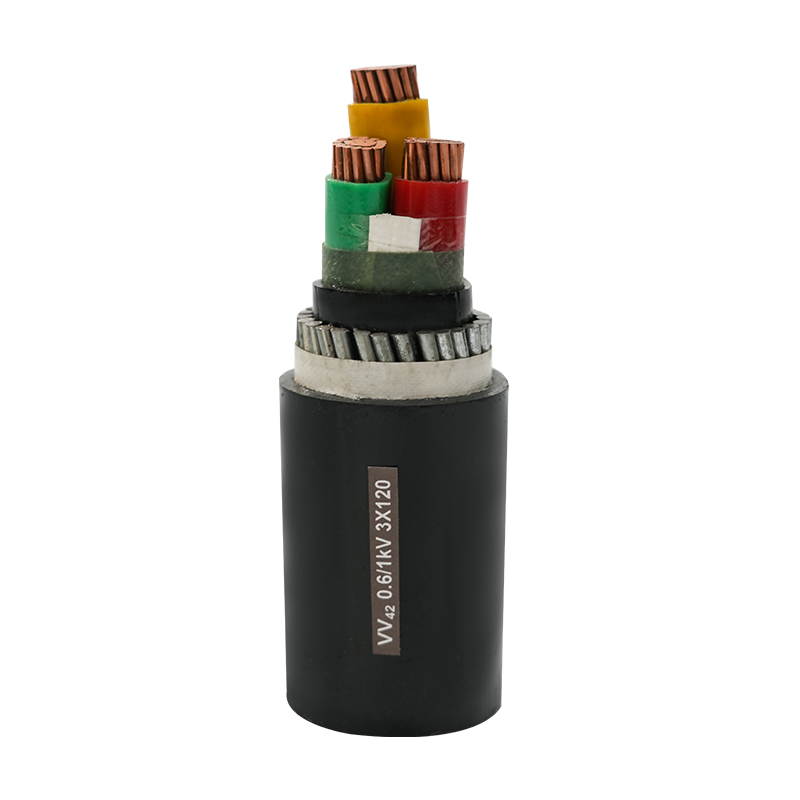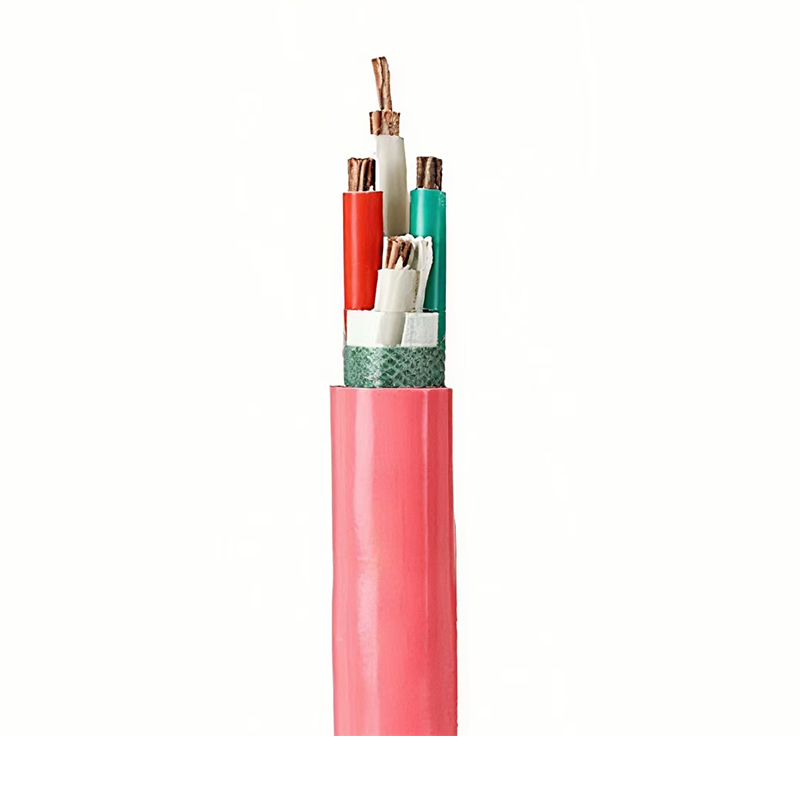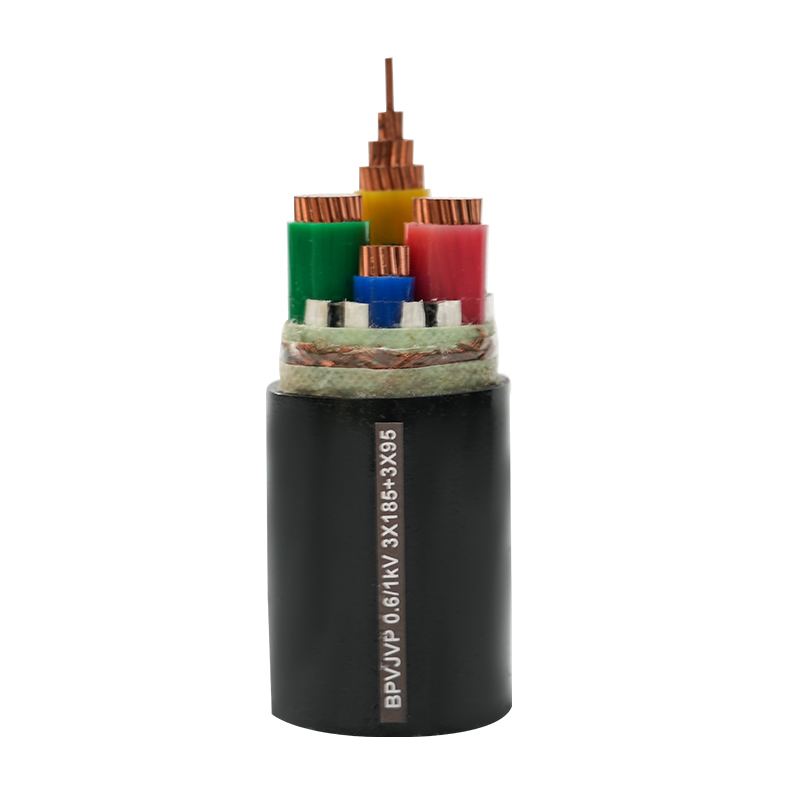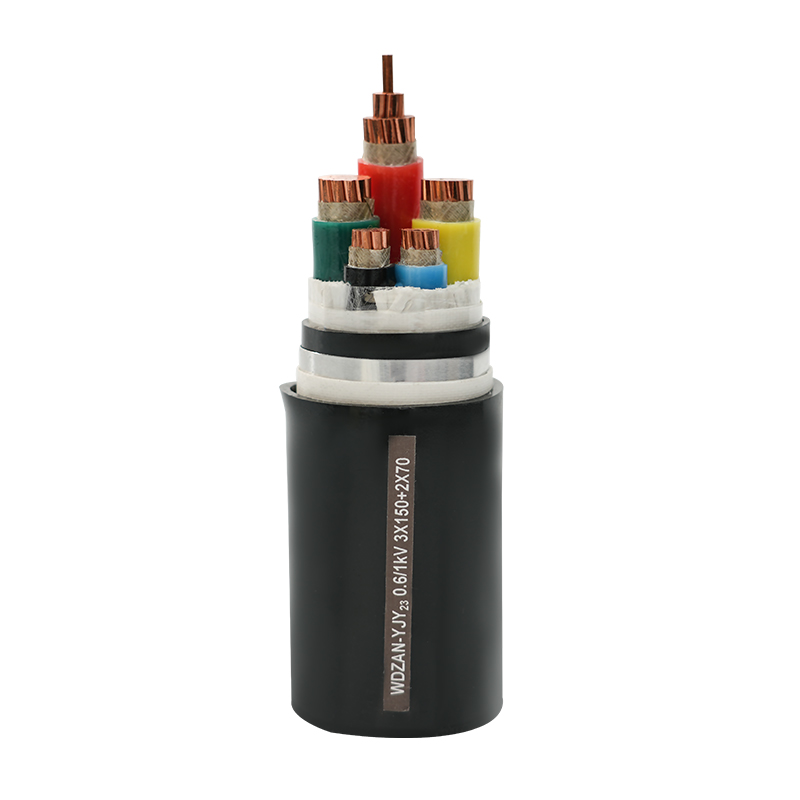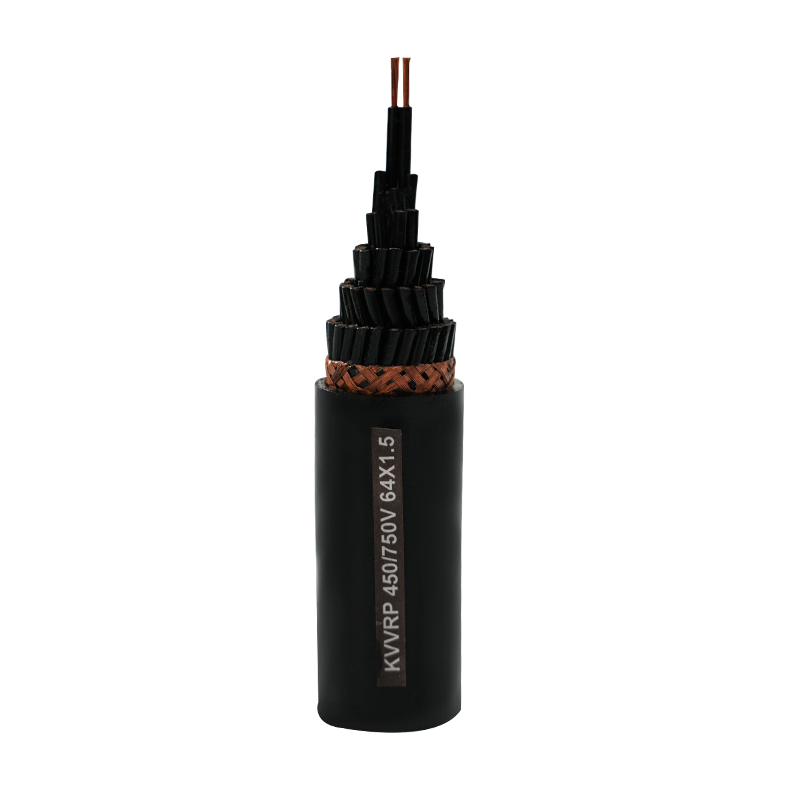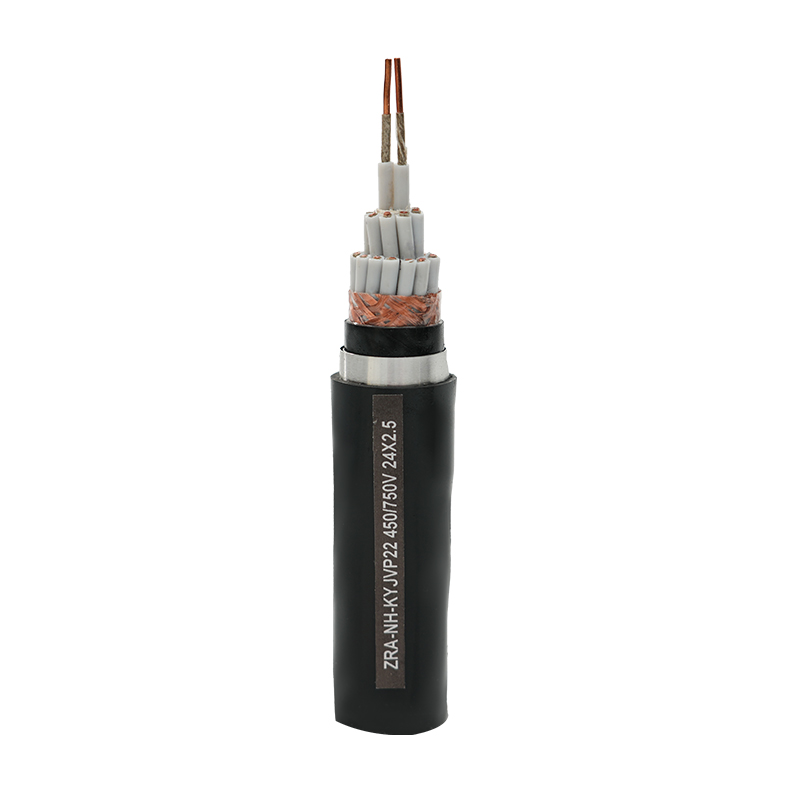The low dielectric constant of PE material essentially changes the way cables transmit signals. When current flows in the cable conductor, an electric field is generated around it, and the insulating material interacts with the electric field and stores electrical energy. The small dielectric constant means that the PE insulating material has a weaker ability to store electrical energy under the action of the electric field, and accordingly, the storage loss of electrical energy in the insulating layer is extremely small. This low-loss characteristic is of great significance in the signal transmission process. Signal transmission is essentially the transmission of electrical signals, and the signal strength and quality will be weakened due to energy loss during transmission. PE insulated computer cables can transmit signals with higher efficiency by virtue of the low loss advantage brought by the small dielectric constant of PE materials, ensuring that the energy loss is minimized when the signal is transmitted in the cable and maintaining the integrity of the signal.
In the computer network environment of high-speed data transmission, the value of the low dielectric constant of PE materials is fully reflected. Today, data transmission speeds are getting faster and faster. From the early low-speed networks to today's high-speed Ethernet and high-speed interconnection within data centers, the performance requirements for computer cables are constantly rising. In this context, signal attenuation becomes one of the key factors affecting the quality of data transmission. PE insulated computer cable with a small dielectric constant can effectively reduce signal attenuation. When high-speed data signals are transmitted in cables, due to the small dielectric constant of PE insulation materials, the energy carried by the signal is not easily over-stored and lost in the insulation layer, thereby reducing the degree to which the signal strength weakens as the transmission distance increases. In this way, the signal can reach the receiving end with higher strength and clarity, improving the transmission speed and quality of the signal.
For computer systems, stable and fast data transmission is the basis for their efficient operation. Whether it is a personal computer, a server cluster, or a complex industrial computer control system, it relies on computer cables to achieve data interaction between devices. PE insulated computer cables provide reliable data transmission guarantees for computer systems with the advantage of a small dielectric constant. In personal computers, data transmission between various hardware devices such as hard disks, graphics cards, memory, etc. and the motherboard needs to be fast and accurate. PE insulated computer cables can ensure that data is efficient and stable in short-distance transmission, avoid data transmission errors caused by signal attenuation and interference, and improve the overall performance and response speed of the computer. In server clusters and data centers, a large amount of data needs to be quickly transmitted between different servers, storage devices, and network devices. The small dielectric constant characteristics of PE insulated computer cables enable them to meet the needs of high-speed transmission of massive data, ensuring the efficient operation of data centers and reliable storage and processing of data.
In the field of industrial automation, the advantage of the small dielectric constant of PE insulated computer cables is also indispensable. Industrial automation systems involve data communication between many sensors, controllers, and actuators, and have extremely high requirements for the accuracy and real-time performance of signal transmission. The production site environment is complex, with many unfavorable factors such as electromagnetic interference, high temperature, and humidity, which poses a severe challenge to the performance of computer cables. With a small dielectric constant, PE insulated computer cables can stably transmit signals in a complex electromagnetic environment. Due to the small storage loss of electrical energy in the insulation layer, the signal is relatively less affected by external electromagnetic interference. It can accurately transmit the data collected by the sensor to the controller, and accurately transmit the controller's instructions to the actuator, so as to achieve precise control of the production process and improve production efficiency and product quality.
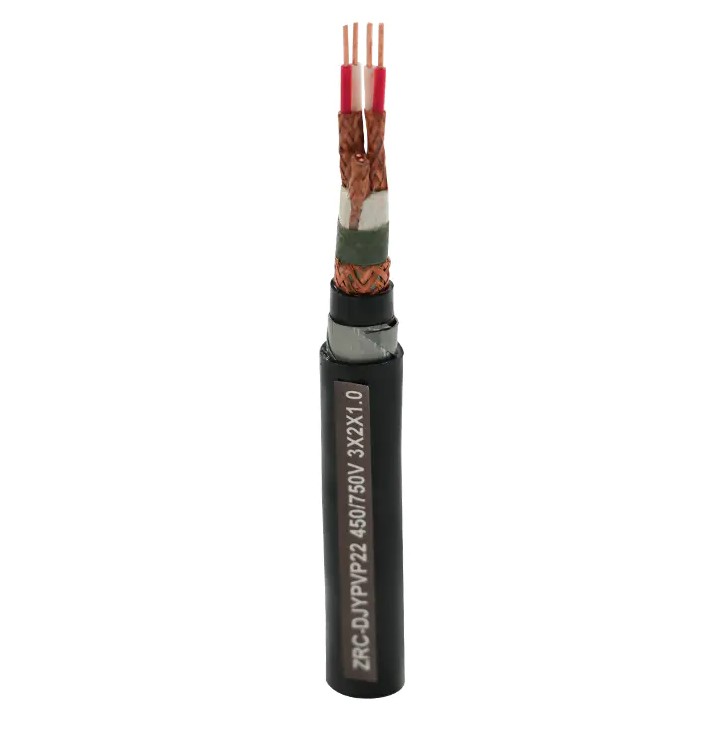
The field of intelligent buildings is also inseparable from the help of the small dielectric constant of PE insulated computer cables. With the widespread application of intelligent technology in buildings, building automation systems, security monitoring systems, communication systems, etc. require a large number of cables for connection and signal transmission. In intelligent buildings, the data interaction between various devices is frequent and complex, and the stability and speed of signal transmission are required to be high. The small dielectric constant of PE insulated computer cables enables it to ensure efficient signal transmission in the complex electromagnetic environment of the building. Whether it is data collected by temperature sensors, humidity sensors, etc., or control instructions issued by lighting controllers, air conditioning controllers, etc., they can be accurately and quickly transmitted through PE insulated computer cables, realizing intelligent management and control of various equipment in the building, creating a comfortable, convenient and safe living and working environment for people.
The field of medical equipment has almost stringent requirements for the accuracy and reliability of data transmission. For example, computed tomography (CT) equipment, magnetic resonance imaging (MRI) equipment, ultrasonic diagnostic equipment, etc., all need to accurately transmit the collected human body information to the computer system for processing and analysis to assist doctors in making accurate diagnoses. The small dielectric constant of PE insulated computer cables ensures low attenuation and high fidelity of signals during transmission, and can accurately transmit weak signals collected by medical equipment to computer systems, providing reliable data support for medical diagnosis. At the same time, the good chemical corrosion resistance and biocompatibility of PE materials enable them to adapt to the special environment inside medical equipment and ensure the stability and reliability of cables during long-term operation of medical equipment.
In the fields of transportation, energy, aerospace, etc., the characteristics of small dielectric constant of PE insulated computer cables also play an important role. In rail transit, the data transmission between computer control systems, communication systems and various sensors on trains needs to be stable and reliable to ensure the safe operation and efficient communication of trains. PE insulated computer cables can meet this demand and ensure efficient transmission of signals under the complex operating environment of trains. In the energy field, data communication between power monitoring equipment, automation control systems and computers has strict requirements on cable performance. PE insulated computer cables rely on small dielectric constants to achieve real-time and accurate monitoring and management of energy production and transmission processes. In the field of aerospace, data transmission between electronic equipment on aircraft and spacecraft has special requirements for the weight, performance and reliability of cables. The small dielectric constant of PE insulated computer cables enables them to meet lightweight requirements while ensuring high-speed and stable signal transmission, providing guarantee for the normal operation of aerospace equipment.
From material research and development to cable manufacturing, the performance of the small dielectric constant characteristics of PE materials is inseparable from advanced processes and technologies. In the cable production process, the performance of PE insulation materials is fully utilized by precisely controlling the conductor processing, insulation extrusion, shielding production, cabling process and sheath extrusion. In the insulation extrusion process, the temperature, pressure and screw speed of the extruder are strictly controlled to make the PE insulation layer evenly and tightly wrapped on the conductor surface, maximizing the advantages of the small dielectric constant. At the same time, the shielding structure and sheath material of the cable are reasonably designed to further improve the cable's anti-interference ability and environmental adaptability, creating good conditions for the stable performance of the small dielectric constant characteristics.

 English
English 中文简体
中文简体 русский
русский عربى
عربى